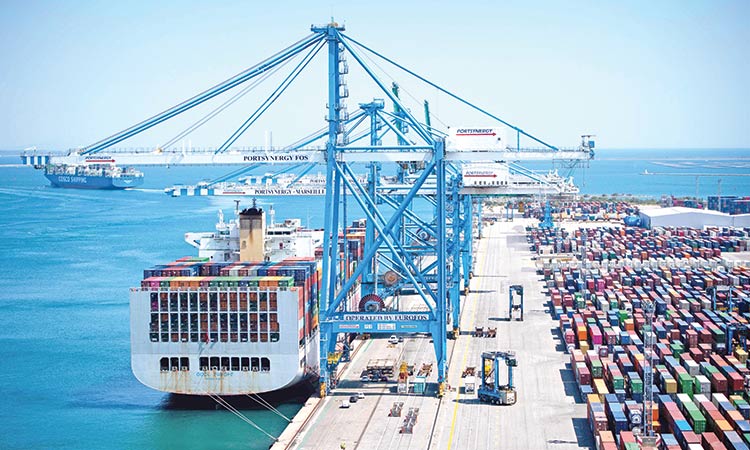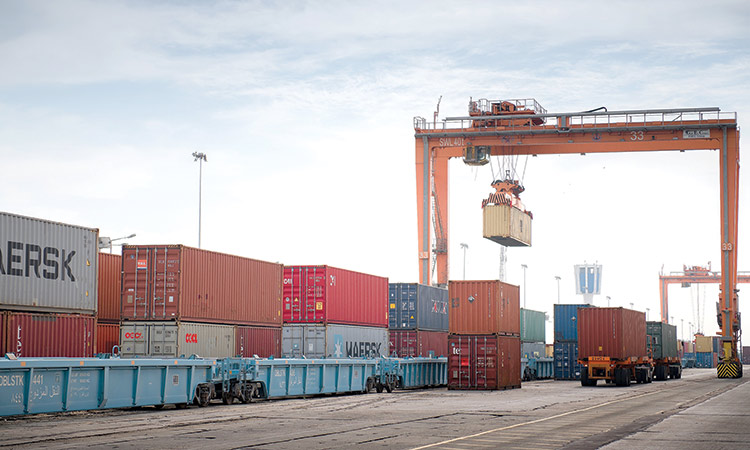Eurozone trade surplus surges as exports and imports are hit

Ships at the EuroFos container terminal in Marseille, France. Agence France-Presse
The bloc also suffered the biggest drop ever recorded in employment in the second quarter, the European Union’s statistics agency Eurostat said.
The agency also confirmed the record drop in the bloc’s gross domestic product (GDP) last quarter, which fell by 12.1% compared with the first three months of the year.
Meanwhile, France has declared its capital Paris and the port city of Marseille high-risk zones for the coronavirus on Friday as the government reported more than 2,500 new infections for the third day in a row. Germany declared nearly all of Spain, including the tourist island of Mallorca, a coronavirus risk region following a spike in cases there. The move deals a blow to hopes for a swift revival of mass tourism after months of lockdown all but wiped out this year’s high season in Europe.
Eurostat said on Friday the June trade surplus was wider than that posted a year earlier when the bloc had a positive balance of 19.4 billion euros. The reading also largely beat market expectations of a 12.6 billion euros surplus. The surplus was more than twice as big as that recorded in May when the bloc had a positive balance of 9.4 billion euros.
The year-on-year improvement was caused by a 12.2% drop of imports, which more than offset the 10% fall in exports, Eurostat estimates showed.
From January to June, the bloc’s exports to the rest of the world fell by 12.7% to about 1 trillion euros compared with the same period in 2019. Imports dropped by 12.9% to 929 billion euros. Trade among euro zone countries was down by 13.6% to 869 billion euros.
The 19 countries of the currency bloc also traded much less among themselves. In June they exchanged goods worth 150.6 billion euros, down by 7.3% compared with the same month last year.
The larger EU, which is composed of 27 states, posted a 20.7 billion euros surplus in June, also caused by a bigger drop in imports than exports.
Among its top three trading partners, the European Union (EU) reduced trade mostly with Britain, which left the EU on January 31.
For January-June, exports to Britain fell by 21.5% from the same period last year, while imports dropped 17.5%, leaving the EU with a smaller trade surplus of 46.7 billion euros compared with 64.5 billion euros in the same period of last year.
Trade with the United States also fell significantly while the drop of exchanges with China was small.
In a separate release, Eurostat said euro zone employment in the period between April and June fell by 2.8% compared with the previous quarter, in the sharpest decline since data began to be collected in 1995.
The agency confirmed the estimates it released on July 31 of a record fall in euro zone GDP in the second quarter, the deepest since the time series started in 1995.
The new release on GDP is based on data from 13 of the 19 euro zone countries, including all the big ones. The earlier release included data from 10 states.
The record fall coincided with coronavirus lockdowns which many euro zone countries began to ease only from May.
Meanwhile, eurozone government bond yields fell on Friday, as a three-day sell-off showed signs of abating after the benchmark German 10-year Bund yield briefly hit a six-week high in early London trading, while inflation expectations rose.
Borrowing costs in Europe have tracked US Treasuries this week, which have been driven to new highs by a deluge of debt issuance in the United States.
But the move started to ease on Friday and the German 10-year Bund was down 1 basis point on the day at -0.425%, having earlier spiked to a six-week high of -0.392% .
Still, the benchmark yield was on track to end the week up 9 bps - its biggest weekly rise since the first week of June.
The sell-off of safe government debt was at odds with a broader risk-averse mood in global markets and was seen by analysts as a temporary correction resulting from uneven positioning.
Riskier Italian and Spanish yields were higher than their core counterparts, with the Italian 10-year yield slightly up on the day at 1.08% and Spain’s 10-year yield up 1 basis point at 0.38%, close to a 2-1/2-week high .
Reuters







